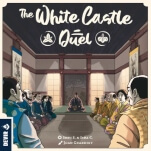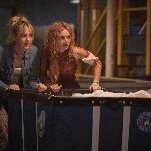Explaining nuclear radiation in layman’s terms can sound a lot like a fantasy novel’s black magic: See, there’s this invisible force within the building blocks of nature that can be harnessed for near limitless energy, or misused to literally melt you into a toxic pile of goo. The briefest exposure to large quantities of it can shorten your lifespan by decades, and there is next to nothing you can do to protect yourself from it.
Consider radiation’s effects on film, then. In “The Most Dangerous Film in the World,” a disquieting new piece from The MIT Press Reader, writer Susan Schuppli explores the haunting scientific and existential implications caused by the world’s worst nuclear disaster by way of “Chernobyl: Chronicle of Difficult Weeks,” a documentary from Soviet filmmaker Vladimir Shevchenko that examines the days that followed Chernobyl’s infamous 1986 meltdown.
Near the beginning of the film, Shevchenko presents viewers with some of the first aerial film footage recorded from a helicopter allowed to fly near the Vladimir Ilyich Lenin Nuclear Power Plant. Given the age of the clip, one might simply think the graininess and random sun spot flashes are the natural results of time. The truth is far more terrifying than that.
[pm_embed_youtube id=’PLjRcaj4_w-0QxcsiGgjTnwXOZLfSa8mID’ type=’playlist’]“Upon projection, small flares of light momentarily ignite the surface of the film…the consequence of decaying radioactive particles moving through the exterior casing of Shevchenko’s 35mm Konvas camera to activate the emulsive properties of the film,” writes Schuppli. “What we are witness to, in this fleeting energetic event, is the radiological conversion of a somewhat pedestrian account of the disaster into the most dangerous film in the world.”
The irradiated film, Schuppli argues, simultaneously becomes a kind of time machine and time capsule; the images live on, as does the poison inside of them. Chillingly, Shevchenko would die only a year later from radiation poisoning.
Schuppli continues: “And while its pictorial mediation allows us to remain at a safe and objective distance from the hazard, the sudden distortion of the documentary’s sound and images, and the Geiger-like interference of radiation, inaugurates a sense of dread that what we are witnessing on film is in fact the unholy representation of the real: an amorphous and evil contagion that continues to release its lethal discharges into the present and future yet to come.”
Yeesh. The whole article is appropriately terrifying for Halloween season, and well worth the read. For even further self-imposed depression, now might also be as good a time as ever to revisit last year’s Chernobyl, which details the follies of individual humans and collective governance, particularly as they relate to the Soviet nuclear meltdown, subsequent coverups, and the incomprehensible toll it took on our planet.
Send Great Job, Internet fallout to [email protected]









































